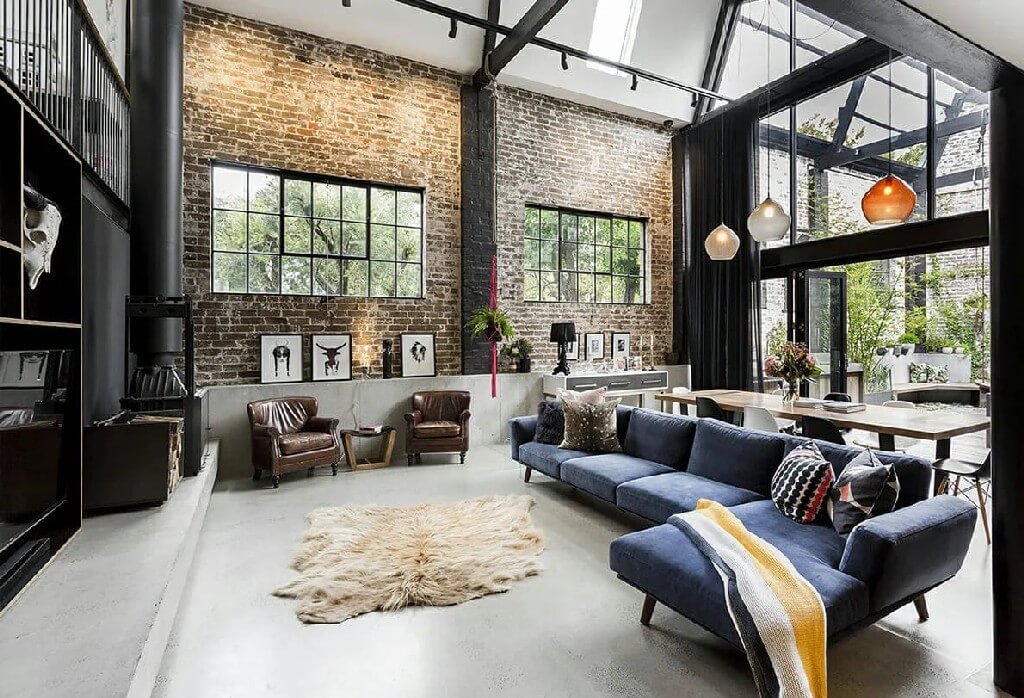Interior design is more than just arranging furniture and choosing colors. It is about creating an environment that reflects your personality, functionality, and comfort. The world of interior design is vast and ever-evolving, offering a variety of styles that cater to different tastes and preferences. Understanding these styles is crucial for anyone looking to make their living space feel more like home. In this article, we will delve into the most popular interior design styles, offering insights and inspiration to help you transform your space into something extraordinary.
What Are Interior Design Styles?
Interior design styles are distinctive ways of organizing and decorating the elements within a room or space. These styles are based on specific themes, colors, materials, furniture, and layouts that give a room its unique feel and atmosphere. From minimalist to bohemian, each style tells a different story and serves different functions, depending on the space it occupies.
Choosing the right style can significantly impact the ambiance of a room. Whether you’re looking to create a cozy atmosphere in your living room or a functional and stylish kitchen, selecting the perfect interior design style will make all the difference. Let’s explore some of the most popular and timeless design styles.
Popular Interior Design Styles
1. Modern Interior Design
Modern design is characterized by clean lines, open spaces, and a minimalistic approach. This style embraces simplicity and functionality while avoiding unnecessary clutter. Furniture pieces are typically streamlined and made from materials like glass, metal, and wood. Neutral color palettes with occasional bold accents are common, creating a serene and sophisticated atmosphere.
One of the key elements of modern design is the use of open floor plans. This not only maximizes space but also encourages a flow between rooms, making homes feel more expansive. Modern design also embraces natural light, with large windows and light-colored walls.
Key Features of Modern Design:
- Clean, straight lines
- Open floor plans
- Neutral color schemes with pops of color
- Use of natural materials like wood, metal, and glass
- Minimal furniture and decor
2. Traditional Interior Design
Traditional interior design draws inspiration from the 18th and 19th centuries, featuring rich wood tones, intricate detailing, and luxurious fabrics. This style exudes elegance and comfort, with a focus on symmetry and balance. Furniture pieces often have ornate carvings, and antique items play a significant role in creating a traditional space.
Color schemes in traditional design lean towards deeper, more muted tones, such as burgundy, navy blue, and gold. Floral patterns and heavy drapes are common, and rooms are often filled with decorative accessories like lamps, artwork, and elegant rugs.
Key Features of Traditional Design:
- Rich wood furniture and detailing
- Symmetrical layouts
- Deep, muted color palettes
- Luxurious fabrics like velvet and silk
- Ornate and antique furnishings
3. Minimalist Interior Design
The minimalist design style is all about “less is more.” This approach focuses on eliminating excess and simplifying spaces. Minimalist interiors often feature neutral color schemes, uncluttered spaces, and functional furniture that serves both form and function. This style is perfect for individuals who enjoy a clean, organized, and peaceful environment.
Minimalism often embraces open spaces with a lack of ornate details. The use of high-quality materials in their purest form, such as concrete, glass, and metal, is common in minimalist designs. The goal is to create a serene, zen-like atmosphere that encourages relaxation and mindfulness.
Key Features of Minimalist Design:
- Neutral color schemes (white, black, gray)
- Simple furniture with clean lines
- Uncluttered spaces
- Focus on functionality and organization
- Limited decorative elements
4. Bohemian Interior Design
Bohemian, or “boho,” style celebrates individuality, creativity, and a laid-back lifestyle. This design style incorporates vibrant colors, eclectic furniture, and a variety of textures, patterns, and materials. Bohemian spaces often look curated over time, with an emphasis on personal expression and comfort.
A boho design typically includes natural elements like wood, rattan, and woven materials, along with vibrant textiles such as tapestries, throw pillows, and rugs. The key to a successful bohemian design is balancing the free-spirited chaos with elements of harmony to avoid overwhelming the space.
Key Features of Bohemian Design:
- Rich, vibrant color palettes
- Eclectic mix of furniture and decor
- Use of natural materials like wood, leather, and rattan
- Layered textures, such as woven rugs and throws
- Artistic, personalized decorations
5. Industrial Interior Design
Industrial interior design is inspired by warehouses and factories, often featuring raw materials like exposed brick, concrete, steel, and wood. This style embraces a “lived-in” aesthetic and often highlights the beauty of imperfection. Industrial spaces tend to be open and spacious, with high ceilings and large windows to allow natural light to flood in.
The industrial look is typically achieved by exposing structural elements like beams, pipes, and ducts, and incorporating vintage or repurposed items like factory stools and metal shelving. The color palette in industrial spaces is usually neutral, with a mix of earthy tones and metallic finishes.
Key Features of Industrial Design:
- Exposed brick and concrete walls
- Raw materials like metal and steel
- Open spaces with high ceilings
- Neutral color palette (grays, browns, blacks)
- Vintage or repurposed furniture
6. Scandinavian Interior Design
Originating from the Nordic countries, Scandinavian design focuses on simplicity, functionality, and natural beauty. This style is marked by clean lines, muted color palettes, and the use of natural materials like wood and stone. Scandinavian interiors often prioritize practicality, with furniture and decor that are both beautiful and functional.
In a Scandinavian space, light is crucial, especially given the long winters in Nordic countries. Therefore, spaces are designed to be bright and airy, with plenty of natural light and light-colored furnishings. The use of cozy textiles, like wool throws and sheepskin rugs, adds warmth and comfort to the space.
Key Features of Scandinavian Design:
- Neutral, light color schemes (white, gray, beige)
- Simple, functional furniture with clean lines
- Use of natural wood and stone
- Cozy textiles, such as wool and sheepskin
- Focus on natural light and airy spaces
7. Coastal Interior Design
Coastal design is inspired by beach houses and seaside living. This style focuses on creating a relaxed, breezy atmosphere by incorporating natural elements like sand, water, and light. The color palette often features soft blues, whites, and sandy neutrals, evoking the colors of the beach.
Coastal interiors typically include natural materials such as wicker, driftwood, and linen. Light, airy furniture and open spaces are common, along with nautical-themed decor like shells, ropes, and marine-inspired artwork.
Key Features of Coastal Design:
- Soft blues, whites, and neutrals
- Natural materials like wicker, driftwood, and linen
- Open, airy spaces
- Nautical or beach-inspired decor
- Light, relaxed furniture and accessories
8. Art Deco Interior Design
Art Deco is a glamorous and luxurious design style that emerged in the early 20th century. Characterized by bold geometric shapes, luxurious materials, and striking color contrasts, this style is all about opulence and elegance. Art Deco furniture often features rich textures, such as lacquered wood, glass, and polished metals.
The color scheme for Art Deco interiors includes bold tones like black, gold, silver, and deep jewel tones, often contrasted with black-and-white patterns. Art Deco is a celebration of excess and extravagant beauty, making it perfect for creating a statement in any room.
Key Features of Art Deco Design:
- Bold geometric shapes and patterns
- Luxurious materials like gold, glass, and lacquered wood
- Contrasting colors (black, gold, silver, jewel tones)
- Glamorous furniture and decor
- Decorative elements like mirrors, chrome, and crystal
How to Choose the Right Interior Design Style for Your Home
When it comes to selecting an interior design style, it’s important to consider your personality, lifestyle, and the functionality of the space. Think about the atmosphere you want to create and the colors, textures, and materials that resonate with you. Don’t be afraid to mix and match elements from different styles to create a space that feels uniquely yours.
If you have a small space, a minimalist or Scandinavian style might be ideal, as it emphasizes simplicity and functionality. On the other hand, if you have a larger space, you may have the freedom to experiment with more intricate styles like traditional or Art Deco.
Additionally, consider your lifestyle needs. For instance, if you have children or pets, a more durable and low-maintenance design might be suitable, such as industrial or coastal styles. Whatever style you choose, make sure it reflects who you are and serves the purpose you intend.
Conclusion
The world of interior design styles offers an endless array of possibilities for creating a space that’s not only beautiful but functional. Whether you lean towards the clean lines of modern design, the warmth of traditional design, or the eclectic charm of bohemian style, each design has its unique qualities that can transform your home. By understanding the different styles and carefully selecting elements that resonate with your preferences, you can create a space that feels like your own personal sanctuary. So take your time, experiment with different ideas, and let your creativity shine through in every room of your home.



